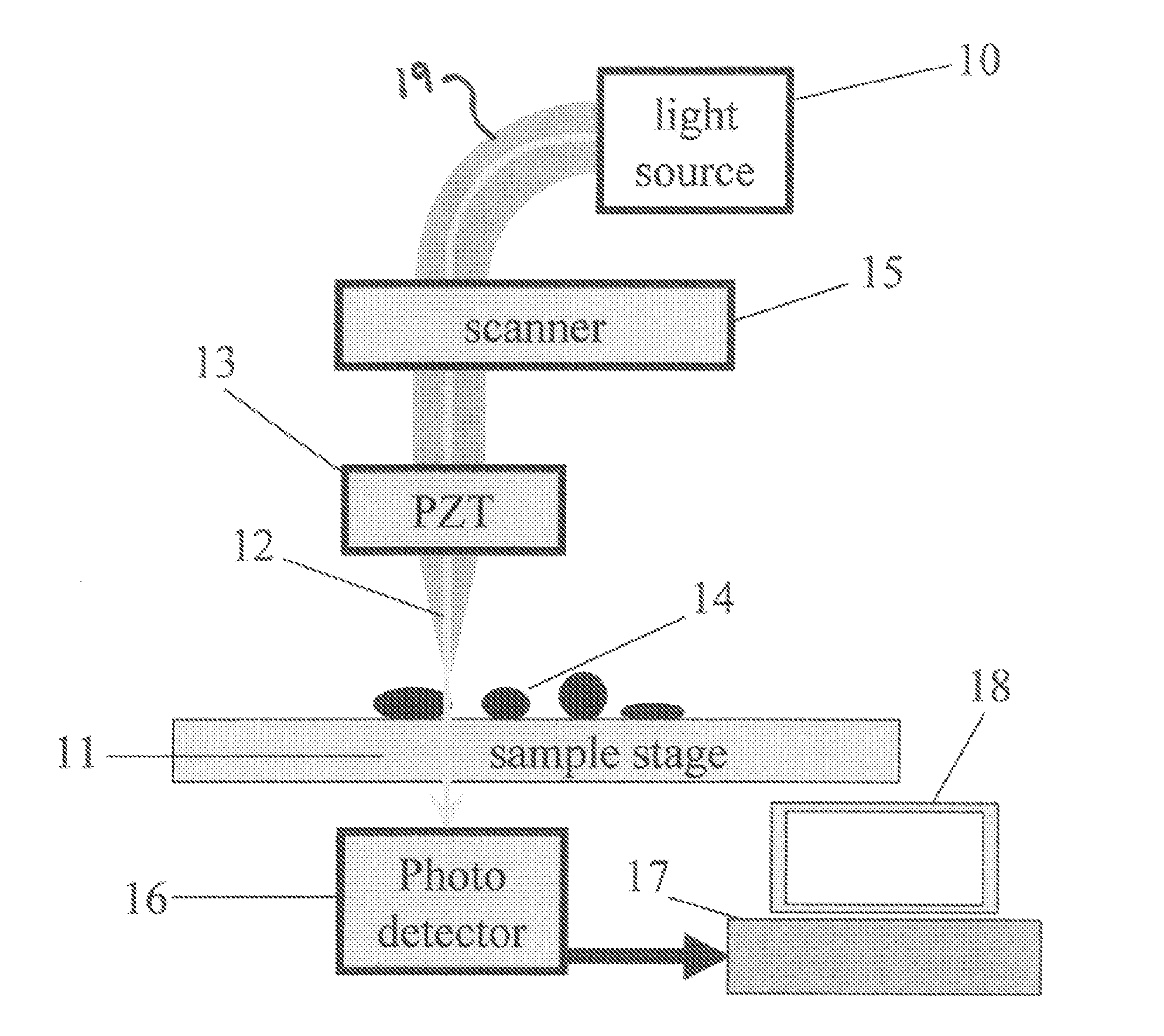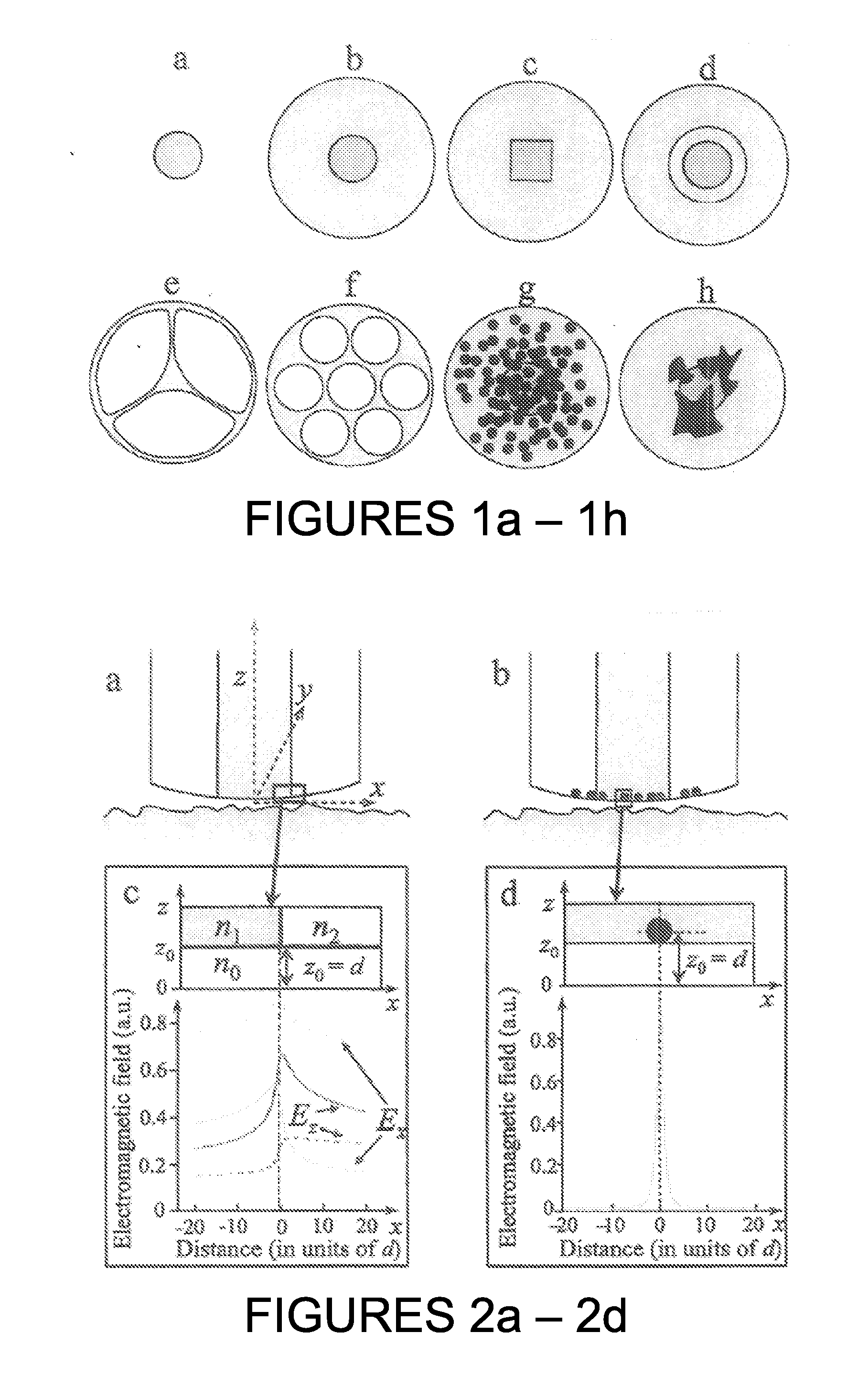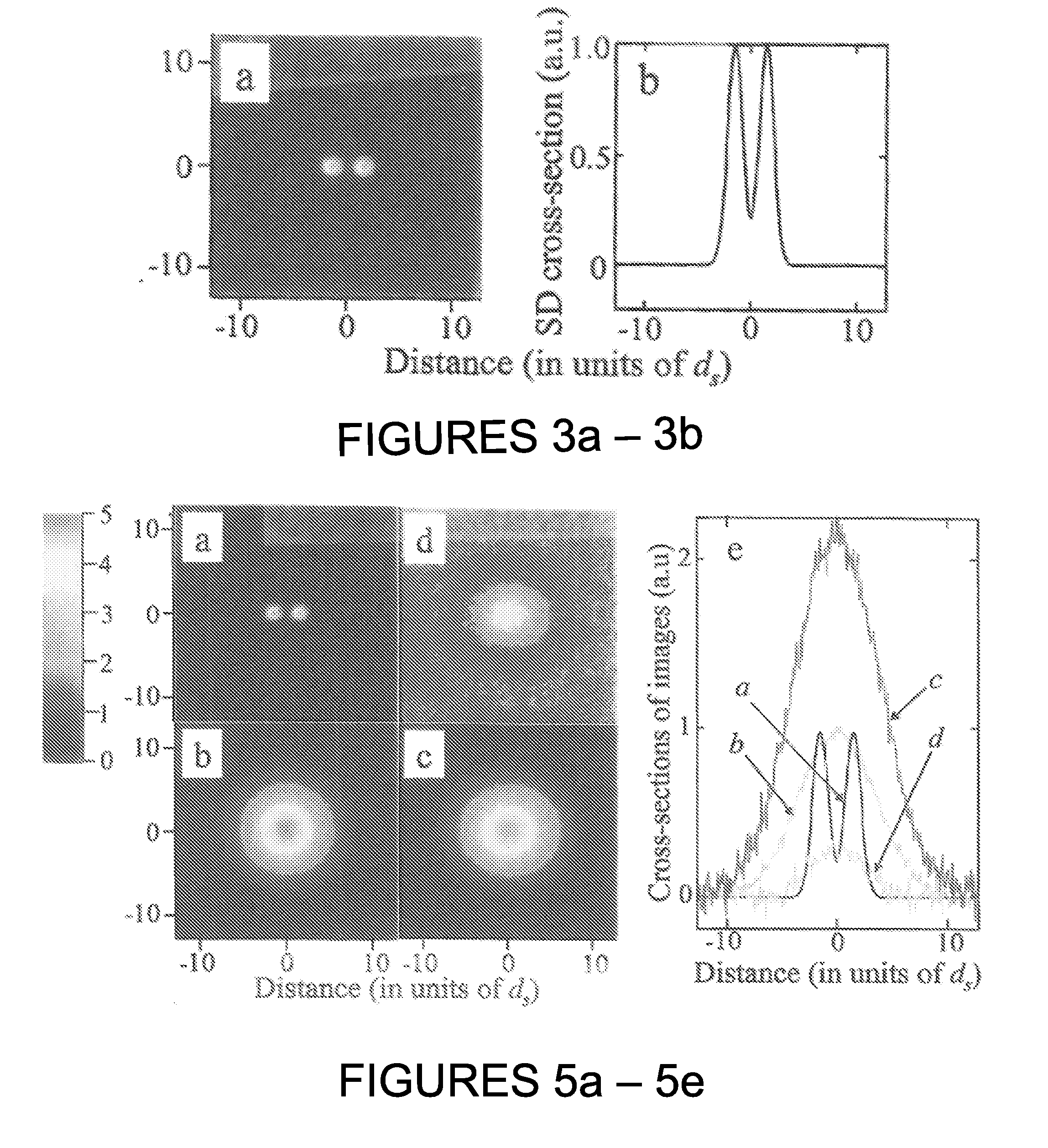Near-field scanning optical microscopy with nanoscale resolution from microscale probes
a technology of nanoscale resolution and optical microscopy, applied in the direction of mechanical measurement arrangement, mechanical roughness/irregularity measurement, instruments, etc., can solve the problems of fragile tips, difficult to obtain sub-500 nanometer resolution with conventional microscopes, and small size of miniaturized tips,
- Summary
- Abstract
- Description
- Claims
- Application Information
AI Technical Summary
Benefits of technology
Problems solved by technology
Method used
Image
Examples
Embodiment Construction
[0032]This description is divided into two parts: Part I, describes the new and improved optical probes and their use to improve NSOM microscopes. Part II, written for those skilled in the art, provides an analytical explanation of the improved performance of NSOM microscopes using the new probes.
[0033]I. The Probes and their Use.
[0034]The problem of subwavelength imaging is addressed by the near-field optics, which enables spatial resolution beyond the diffraction limit. It is commonly accepted that, in order to increase the spatial resolution, the electromagnetic field should be maximally localized. This is usually achieved by placing an extremely small probe near a sample. A device consisting of a probe, which electromagnetically scans a sample surface in its immediate vicinity, is called a near-field scanning optical microscope (NSOM). The signal detected by an NSOM is proportional to the electromagnetic field near the probe apex. An NSOM characterizes the optical properties of ...
PUM
 Login to View More
Login to View More Abstract
Description
Claims
Application Information
 Login to View More
Login to View More - R&D
- Intellectual Property
- Life Sciences
- Materials
- Tech Scout
- Unparalleled Data Quality
- Higher Quality Content
- 60% Fewer Hallucinations
Browse by: Latest US Patents, China's latest patents, Technical Efficacy Thesaurus, Application Domain, Technology Topic, Popular Technical Reports.
© 2025 PatSnap. All rights reserved.Legal|Privacy policy|Modern Slavery Act Transparency Statement|Sitemap|About US| Contact US: help@patsnap.com



